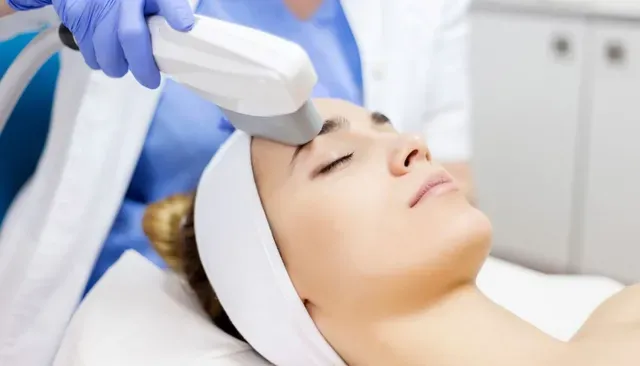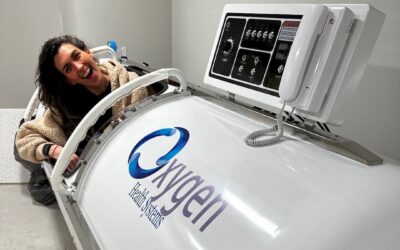When we think about skin-health goals, most of us desire a more youthful and radiant appearance. Targeting fine lines and wrinkles tends to be the first thing we focus on when looking to achieve fresh-faced skin. This is because skin that is smooth and wrinkle free makes us look younger and healthier.
However, there is another skin condition that also ages us, and is often overlooked; hyperpigmentation. Through both the natural process of aging and common inflammatory culprits, our skin may begin to show signs of damage in the form of hyperpigmentation and vascular lesions.
Hyperpigmentation is a medical term for discoloration which appears as dark spots or patches on the skin, creating an uneven complexion. This condition is often the result of both extrinsic and intrinsic factors such as inflammation, sun exposure, and hormones. When the skin is exposed to these damaging elements, a complex process known as melanagensis is triggered.
During this process, excess melanin (pigment) is produced as a defense mechanism against the inflammatory offenders. Melanocytes, which are epidermal cells responsible for producing pigment, are activated in a process involving the enzyme tyrosinase. These epidermal cells are then oxidized and transported up to the skin’s surface making hyperpigmentation more apparent.
Vascular lesions are another common skin imperfection, mostly visible around the nose and cheeks. Due to oxyhemoglobin, these lesions manifest as red discolorations in the skin, commonly in the form of broken capillaries and skin flushing. Often broken capillaries are the result of various skin traumas and excessive dilation of blood vessels. This could be caused by factors such as; changes in extreme temperature, strenuous exercise, alcohol use, and smoking.
Both pigmentation and vascular lesions can be addressed with IPL phototherapy.
What is IPL?
IPL, which stands for Intense Pulse Light, is a non-ablative, light-based device and has the ability to treat multiple skin imperfections at once such as:
- Hyperpigmentation
- Age Spots
- Broken Capillaries
- Redness and Rosacea
- Poikiloderma
- Solar Lentigines (Liver Spots)
- Actinic Keratoses
As opposed to lasers, IPL targets multiple wavelengths, which is the reason why treatment is successful on multiple skin conditions in a single session.
How does IPL work?
During the treatment, a series of light pulses target pigmented skin such as sun spots and broken capillaries. To selectively address areas of concern without damaging surrounding skin tissue, treatment parameters are carefully selected and customized for the individual. Wavelength, duration, and energy level are carefully chosen to ensure that hyperpigmentation and oxyhemoglobin are properly targeted.
The IPL energy penetrates excess melanin seen in hyperpigmentation which creates heat in the tissue. The areas of pigment are then broken down into smaller particles and removed by the lymphatic system or become flaky and peel off.
In vascular lesions, the oxyhemoglobin absorbs the light energy and creates heat in the blood vessel wall.This heating effect then dismantles the blood vessel causing it to collapse and is removed by the body.
What to Expect
Almost anyone who is looking for a brighter and more even complexion can benefit from IPL photorejuvenation. However, there are some contraindications for the treatment. The most important factor to consider is sun exposure. Sun and tanning beds must be avoided for four weeks prior to IPL treatment, and two weeks after. (Tip: keep in mind that if a brighter, or more even complexion is desired, then UVA/UVB exposure should be avoided anyway.) Also, IPL is a light based therapy so photosensitizing medications such as antibiotics and steroids must be discontinued 14 days before treatment.
Since the IPL is a non-ablative device, there is minimal downtime post-treatment. Areas of pigmentation may temporarily become darker after the session, but will slough off after a few days. Any redness or irritation present should subside within 24 hours. After that, pigmented lesions will become lighter and less noticeable. Four to six treatments are usually recommended for optimal results, depending on the condition of your skin and current skincare habits. Treatments are typically spaced two to four weeks apart.
Always remember: treatment for hyperpigmentation cannot be complete without adequate and consistent sun defense.
If you are wishing for a more even skin tone this year, you don’t have to wish anymore! With IPL phototherapy, skin irregularities can be a thing of the past. As with all skin conditions, it’s always best to book a free consultation to see if you are a good candidate for Intense Pulsed Light Therapy first. The aestheticians at Spa at OWM have over 15 years of experience in the science of the skin and youth enhancing treatments. Together we can help you to achieve the youthful glow that you’ve been looking for!




